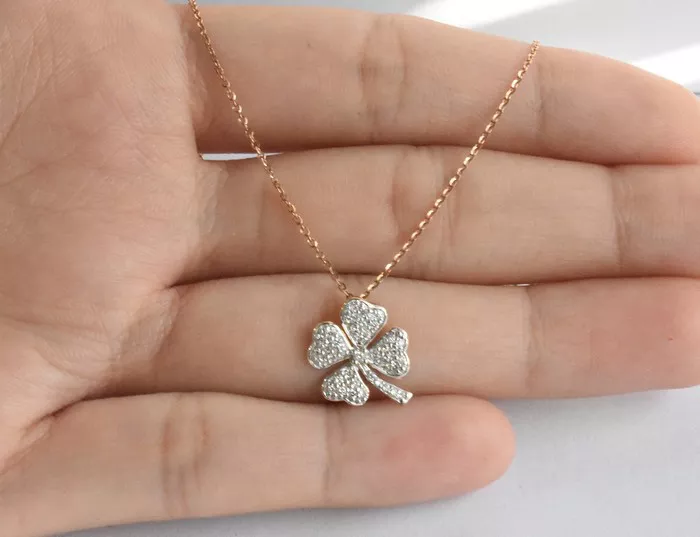Diamonds and pendants are both items that hold significant cultural, historical, and practical value, yet they serve vastly different purposes and possess distinct characteristics. Diamonds, renowned for their brilliance and durability, are one of the most coveted gemstones in the world. Pendants, on the other hand, are decorative items worn as jewelry, often serving as a means of personal expression or as symbolic adornments.
Diamonds: Nature’s Most Precious Gemstone
Diamonds, formed deep within the Earth’s mantle under immense pressure and temperature, are crystalline structures composed of carbon atoms arranged in a specific lattice. This unique atomic structure gives diamonds their exceptional hardness, making them the hardest natural substance known to man. Diamonds typically form over millions of years, brought to the Earth’s surface through volcanic eruptions in deposits known as kimberlite pipes.
Physical Properties of Diamonds
Hardness: Diamond ranks as a 10 on the Mohs scale of hardness, indicating its superior resistance to scratching and abrasion. This property makes diamonds highly suitable for use in jewelry that withstands daily wear.
Brilliance: Diamonds are celebrated for their exceptional sparkle and brilliance due to their high refractive index. This optical property is enhanced by expert cutting, which maximizes light reflection within the stone.
Color and Clarity: Diamonds occur in various colors, from colorless (most valued) to yellow, brown, and even rare hues like pink or blue. Clarity refers to the presence of internal or external imperfections, known as inclusions and blemishes, which can affect a diamond’s transparency and value.
Carat Weight: Diamonds are weighed in carats, with one carat equaling 0.2 grams. Larger diamonds are rarer and typically command higher prices per carat due to their scarcity.
Cultural and Symbolic Significance of Diamonds
Diamonds hold deep cultural significance across different societies and time periods:
Symbol of Love and Commitment: In Western cultures, diamonds are synonymous with engagement rings, symbolizing eternal love and fidelity.
Status and Wealth: Historically, diamonds have been associated with wealth and nobility, worn by royalty and elites as symbols of power and prestige.
Spiritual and Healing Properties: Some cultures attribute metaphysical properties to diamonds, believing they enhance inner strength, clarity of thought, and positive energy.
Pendants: Personal Adornments and Symbolic Jewelry
Pendants are decorative ornaments worn around the neck, typically suspended from a chain or cord. Unlike diamonds, pendants can be made from a variety of materials, including precious metals like gold and silver, gemstones, and even organic materials such as wood or bone. Pendants often serve as focal points of jewelry pieces, reflecting personal taste, cultural traditions, or spiritual beliefs.
See Also: How to Choose a Diamond Pendant: Everything You Need To Know
Types and Designs of Pendants
Symbolic Pendants: Many pendants feature symbols that hold personal or cultural significance, such as religious symbols (crosses, om symbols), talismans (hamsa hand, evil eye), or symbols of love and friendship (hearts, infinity symbols).
Gemstone Pendants: Pendants adorned with gemstones, including diamonds, offer versatility in color and style. Gemstone pendants can feature a single stone or a combination of stones, providing a spectrum of hues and energies.
Custom and Artistic Pendants: Artisans craft custom pendants that showcase intricate designs, engraving, or metalwork, catering to individual preferences and occasions.
Practical and Symbolic Uses of Pendants
Fashion and Style: Pendants are a staple in fashion jewelry, offering wearers a way to accessorize and personalize their outfits.
Sentimental Gifts: Pendants often serve as sentimental gifts, marking special occasions such as birthdays, anniversaries, or graduations.
Cultural and Religious Significance: Pendants play a crucial role in religious and cultural practices worldwide, serving as markers of faith or tradition.
Comparing Diamonds and Pendants
While diamonds and pendants can intersect in jewelry design—diamond pendants being a notable example—they fundamentally differ in their nature and purpose:
Material Composition: Diamonds are naturally occurring gemstones composed of carbon, prized for their hardness and brilliance. Pendants, in contrast, can be made from various materials and are defined more by their design and purpose than by a specific material type.
Functional Use: Diamonds primarily serve as gemstones in jewelry, valued for their aesthetic appeal and durability. Pendants, however, are wearable art pieces that can incorporate diamonds or other gemstones as part of their design.
Cultural and Symbolic Meaning: Diamonds hold significant cultural and symbolic meanings related to love, status, and spirituality. Pendants, while often symbolic in their own right, vary widely in meaning depending on design and cultural context.
Evolution in Jewelry Trends and Consumer Preferences
Jewelry trends evolve with societal changes, technological advancements, and shifting consumer preferences:
Customization and Personalization: Modern consumers seek jewelry that reflects their individuality and values, driving demand for custom-made pendants and personalized diamond jewelry.
Sustainable and Ethical Practices: Increasing awareness of environmental and ethical concerns has prompted the jewelry industry to adopt sustainable practices, from responsibly sourced diamonds to eco-friendly materials for pendants.
Integration of Technology: Jewelry designers leverage technology, such as computer-aided design (CAD) and 3D printing, to create intricate and innovative pendant designs, as well as precision-cut diamonds that maximize brilliance.
Conclusion
In conclusion, diamonds and pendants each occupy unique roles in the world of jewelry and personal adornment. Diamonds, with their geological rarity and timeless allure, symbolize enduring love, wealth, and spiritual clarity. Pendants, meanwhile, offer versatility and personal expression, embodying cultural traditions, individual beliefs, and artistic creativity.
Whether adorned with diamonds or crafted from diverse materials, pendants continue to captivate wearers with their beauty and symbolism. Understanding the distinctions between diamonds and pendants enriches our appreciation for these cherished adornments, reflecting the intersection of nature, culture, and personal identity in the realm of jewelry.

